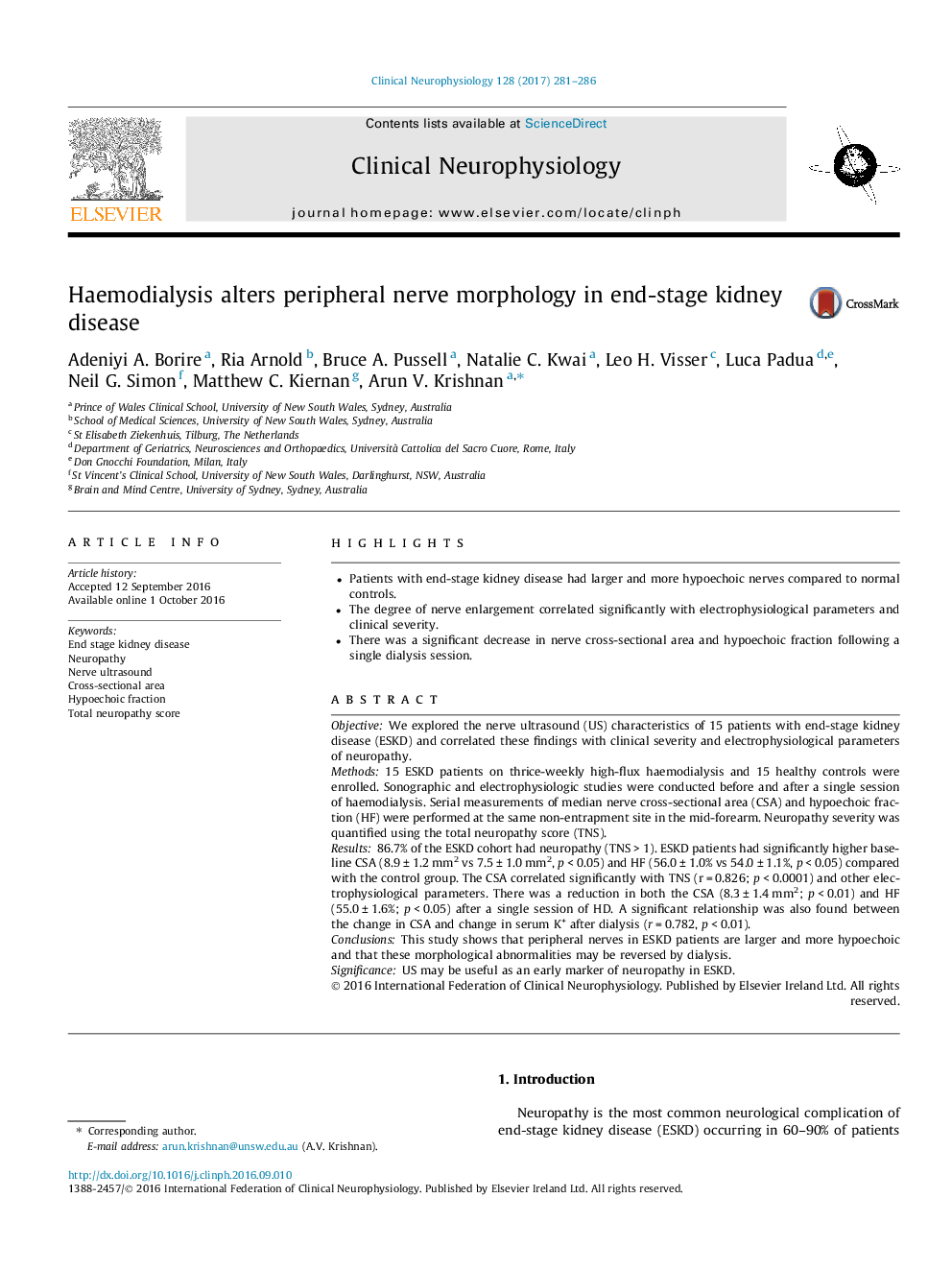| Article ID | Journal | Published Year | Pages | File Type |
|---|---|---|---|---|
| 5627458 | Clinical Neurophysiology | 2017 | 6 Pages |
â¢Patients with end-stage kidney disease had larger and more hypoechoic nerves compared to normal controls.â¢The degree of nerve enlargement correlated significantly with electrophysiological parameters and clinical severity.â¢There was a significant decrease in nerve cross-sectional area and hypoechoic fraction following a single dialysis session.
ObjectiveWe explored the nerve ultrasound (US) characteristics of 15 patients with end-stage kidney disease (ESKD) and correlated these findings with clinical severity and electrophysiological parameters of neuropathy.Methods15 ESKD patients on thrice-weekly high-flux haemodialysis and 15 healthy controls were enrolled. Sonographic and electrophysiologic studies were conducted before and after a single session of haemodialysis. Serial measurements of median nerve cross-sectional area (CSA) and hypoechoic fraction (HF) were performed at the same non-entrapment site in the mid-forearm. Neuropathy severity was quantified using the total neuropathy score (TNS).Results86.7% of the ESKD cohort had neuropathy (TNS > 1). ESKD patients had significantly higher baseline CSA (8.9 ± 1.2 mm2 vs 7.5 ± 1.0 mm2, p < 0.05) and HF (56.0 ± 1.0% vs 54.0 ± 1.1%, p < 0.05) compared with the control group. The CSA correlated significantly with TNS (r = 0.826; p < 0.0001) and other electrophysiological parameters. There was a reduction in both the CSA (8.3 ± 1.4 mm2; p < 0.01) and HF (55.0 ± 1.6%; p < 0.05) after a single session of HD. A significant relationship was also found between the change in CSA and change in serum K+ after dialysis (r = 0.782, p < 0.01).ConclusionsThis study shows that peripheral nerves in ESKD patients are larger and more hypoechoic and that these morphological abnormalities may be reversed by dialysis.SignificanceUS may be useful as an early marker of neuropathy in ESKD.
